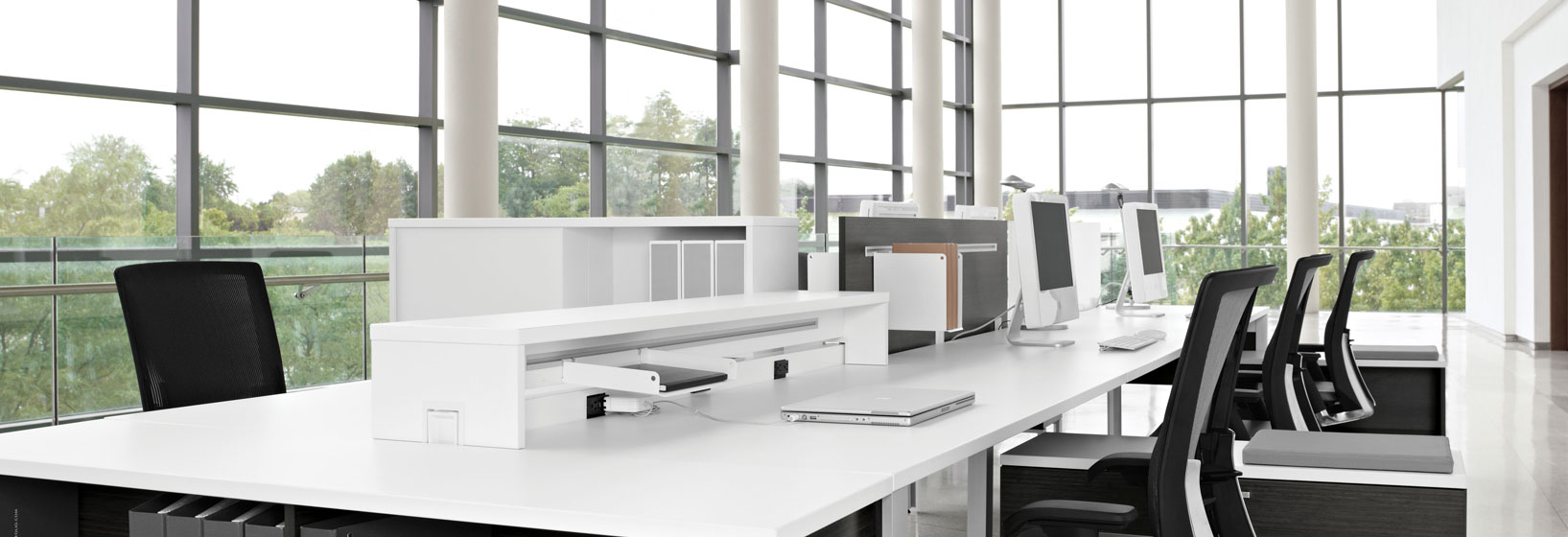Trying to use furniture that has been left behind might not be the best leasing strategy.
When you’re a landlord or a property manager, it might be tempting to try and take advantage of office furniture that tenants leave behind, in an effort to show furnished office space to potential new tenants. The cost of removing old furniture can sometimes be high, so why not leave it in place for new businesses, right?
Wrong. Unfortunately, as far as leasing strategies go, that isn’t always the most effective route. Oftentimes, the furniture won't fit current market trends, so might not be appealing to incoming tenants. In fact, having old furniture in place might even make it harder for them to see the potential of the space.
“What was trending 5 to 10 years ago is no longer trending, so it doesn’t lend itself to quick turnover for leasing,” says Jason DeGraaf, Facilities Specialist for Rightsize.
Jason works with property managers, leasing companies and businesses to remove furniture that has been left behind, because across the board spec suites and empty spaces are renting out more quickly. If people don’t think about what kind of furniture is on display, they might be stuck with office space that doesn’t show well.
For example, most of the old furniture that businesses leave behind are the large 8 x 8 cubicles that were popular years ago. Now, businesses tend to be more focused on smaller workstations or open concepts that create a more modern feel.
“Businesses who come into a space and see 100 cubes of old furniture can’t imagine how they could make the space their own,” Jason says.
When landlords do have to remove the furniture to accommodate a new tenant, they forget to account for the depreciation of the furniture’s value. The net aggregate value of office furniture decreases like a car pulling off a lot. In most cases, the cost of the labor to remove everything from the space alone exceeds the value of furniture.
Consensus? Landlords, before you let a tenant walk out the door, leaving behind rows of old workstations, think about how that could impact your bottom line. But if you are stuck with old office furniture, Rightsize can help.
To start, a Rightsize professional will conduct an inventory of existing furniture, then figure out what items have potential resale value. Then, they will determine the cost of the furniture decommissioning, which includest the labor required to disassemble and remove the furniture, the cost of transportation and then the cost of handling it once it’s in the warehouse. Once that number is established, Rightsize will create a number that credits the business in some capacity for the value of the furniture.
The result is almost always a cost saving to the client. Rightsize has tools available that accurately measure which brands can be refurbished and resold, and takes into account the resale value in their numbers. In most cases, office furniture decommissioning breaks down into three categories:
High-End Furniture - This happens about 10% of the time. A landlord or business will call Rightsize to remove high-end office furniture. In this scenario, Rightsize often times will cover the cost of removal and repay the client for the value of the assets.
Medium-Grade Furniture - 20% of Rightsize decommissioning projects are a blend between good quality furniture and items that have a much lower value. In cases like this, Rightsize will determine the total value and remove the furniture at no cost to the customer, using the value of the furniture to offset the labor costs.
Low-Value Furniture - This scenario is the most common, happening in roughly 70% of decommissioning projects. Rightsize will evaluate the value of the furniture and subtract that from the total cost of the decommission. The net aggregate value is still a discounted rate for businesses.
Have questions about leasing or furniture decommissioning? Don’t hesitate to contact Rightsize.





